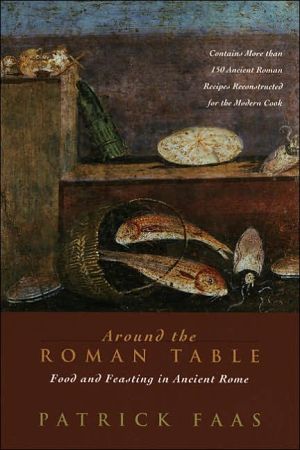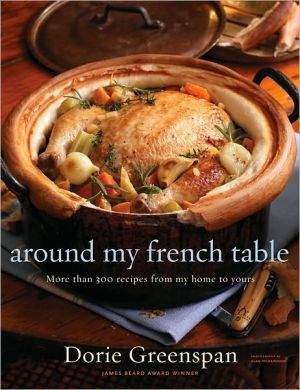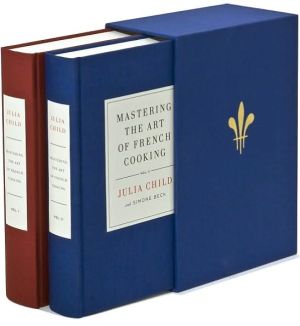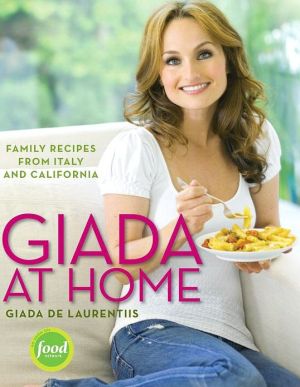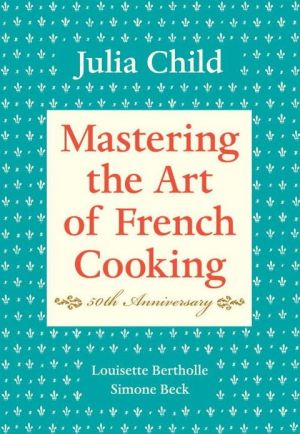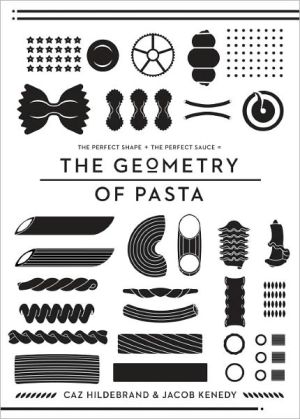Around the Roman Table: Food and Feasting in Ancient Rome
Craving dolphin meatballs? Can't find a reliable restaurant for boiled parrot? Have a hankering for jellyfish omelettes, sows' wombs in brine, sheep's brain pate, or stuffed mice? Look no further than Around the Roman Table, a unique hybrid cookbook and history lesson. A portrait of Roman society from the vantage point of the dining table, kitchen, and market stalls, Around the Roman Table offers both an account of Roman eating customs and 150 recipes reconstructed for the modern cook.\ Faas...
Search in google:
Craving dolphin meatballs? Can't find a reliable restaurant for boiled parrot? Have a hankering for jellyfish omelettes, sows' wombs in brine, sheep's brain pate, or stuffed mice? Look no further than Around the Roman Table, a unique hybrid cookbook and history lesson. A portrait of Roman society from the vantage point of the dining table, kitchen, and market stalls, Around the Roman Table offers both an account of Roman eating customs and 150 recipes reconstructed for the modern cook. Faas guides readers through the culinary conquests of Roman invasions—as conquerors pillaged foodstuffs from faraway lands—to the decadence of Imperial Rome and its associated table manners, dining arrangements, spices, seasonings, and cooking techniques. With recipes for such appetizing dishes as chicken galantine with lambs' brains and fish relish, Around the Roman Table is ideal for food aficionados who wish to understand how the desire for power and conquest was manifested in Roman appetites."There are many misconceptions about the food of ancient Rome that Faas sets out to correct. The result is half cookbook, half history book and is entirely fascinating to both chef and antiquarian alike."—Washington Times Janny de Moor The most extensive book on this subject. It is a revelation.
Foreword Introduction Part One I. Culinary History The Age of Kings (753 BC to 509 BC) The Republic (509 BC to 7 BC) The Empire (7 BC to AD 476) II. The Meal Table Manners and Etiquette The Courses The Menu The Carousal III. Wine and Other Drinks Wine The Orgy Wine Production Other Drinks IV. The Cook and His Condiments The Cook Cooking Medicinal Theory Flavours - Sour Flavours - Salt Flavours - Sweet Flavours - Bitter Herbs Spices Other Ingredients Part Two V. From the Land Cereals Pulses Vegetables Fruit and Nuts VI. From the Fire Eating Meat Sacrifice Meat Distribution Animal Suffering Pork The Sacred Bull Sheep and Goats Dogs Game VII. From the Air The Farmyard Wild Birds VIII. From the Water Appendix Weights and Measures Money Prices Glossary Bibliography Illustration Sources Conversion Tables Index
\ Washington Times"There are many misconceptions about the food of ancient Rome that Faas sets out to correct. The result is half cookbook, half history book and is entirely fascinating to both chef and antiquarian alike. . . . . To read Mr. Faas book is a pleasure, to put it to use requires a certain spirit. Many of the recipes he includes in the book are accessible to the adventurous cook and will definitely reward a curious mind and palate."\ — David Johnson\ \ \ \ \ \ Bryn Mawr Classical Review"The author has chosen a representative cross-section of ancient recipes and has provided adaptations and background material that will render the volume quite used friendly, especially for students who wish to try their hand at ancient cuiosine."\ — John F. Donahue\ \ \ \ The Cauldron"A delightful look at Roman culinary history, customs and recipes. It should make for a good library addition for anyone who is interested in recreating traditional recipes, as well as a nice introduction for those who are simply wanting to learn more about ancient Roman culinary history."\ \ \ \ \ Washington Times"There are many misconceptions about the food of ancient Rome that Faas sets out to correct. The result is half cookbook, half history book and is entirely fascinating to both chef and antiquarian alike. . . . . To read Mr. Faas book is a pleasure, to put it to use requires a certain spirit. Many of the recipes he includes in the book are accessible to the adventurous cook and will definitely reward a curious mind and palate."\ \ \ \ \ Bryn Mawr Classical Review"The author has chosen a representative cross-section of ancient recipes and has provided adaptations and background material that will render the volume quite used friendly, especially for students who wish to try their hand at ancient cuiosine."\ \ \ \ \ R. de GoedeA wonderful book for cooking and reading. It is fascinating,interesting and witty. \ —Viva\ \ \ \ \ Janny de MoorThe most extensive book on this subject. It is a revelation.\ \ \ \ \ Publishers WeeklyFaas, a Dutch food historian and chef, opens with the caveats that this is "no historical treatise" and that the more than 150 recipes will be difficult to prepare in a modern kitchen. Excuses aside, this is a capable study of the fascinating ancient Roman culture and the foods that graced its tables. A culinary history leads up to and through the Empire, when imported foods were all the rage and forks were unheard of. (Slaves were ordered to grow long hair so that their masters could wipe their hands on it.) Granted that these recipes are unlikely to be usable, as Faas points out, it's still unfortunate that such recipes as Broad Beans with Meatballs leave out certain details (such as, the type of pan used and the cooking time). Although Faas is most enthusiastic about foods that won't cause the modern palate to salivate-e.g., Stuffed Mouse and Dolphin Balls as well as "the meat of nursing puppies"-of greatest interest here are the comparisons between ancient Roman foods and modern Italian cooking. A dish of Fried Courgettes marinated in vinegar would not be out-of-place on today's antipasto table, and the Lupin beans that were once fed to livestock are now brined and eaten as a snack. (Dec.) Copyright 2002 Cahners Business Information.\ \ \ \ \ David Johnson"To read Mr. Faas' book is a pleasure."\ \ \ \ \ Library JournalClaiming that his work is "neither a history book nor a cookery book; it is a bit of both," Dutch food historian and chef Faas balances plenty of facts about the Roman Empire's dining customs and social traditions with an entertaining food guide, mixing in 150 recipes (adapted for the modern cook). The lusty Romans' passion for exotic food is legendary, and some recipes are more bizarre than what an Iron Chef could conjure. Apparently, Romans ate almost everything that roamed the planet: there are recipes for roast moray eel, boiled sow's nipples, calf brain p t , cooked parrot tongue, and more. Surprisingly, Roman dishes were usually highly spiced, using more pepper than the modern Western palate could tolerate. Recently, Faas's enthusiasm for re-creating ancient Roman delicacies instigated a lawsuit by the Society for the Prevention of Cruelty to Animals for baking stuffed mice (recipe included here). A good companion to Mariangela Rinaldi and Mariangela Vicini's Buon Appetito, Your Holiness and for culinary history collections.-David Nudo, New York Copyright 2003 Cahners Business Information.\ \
